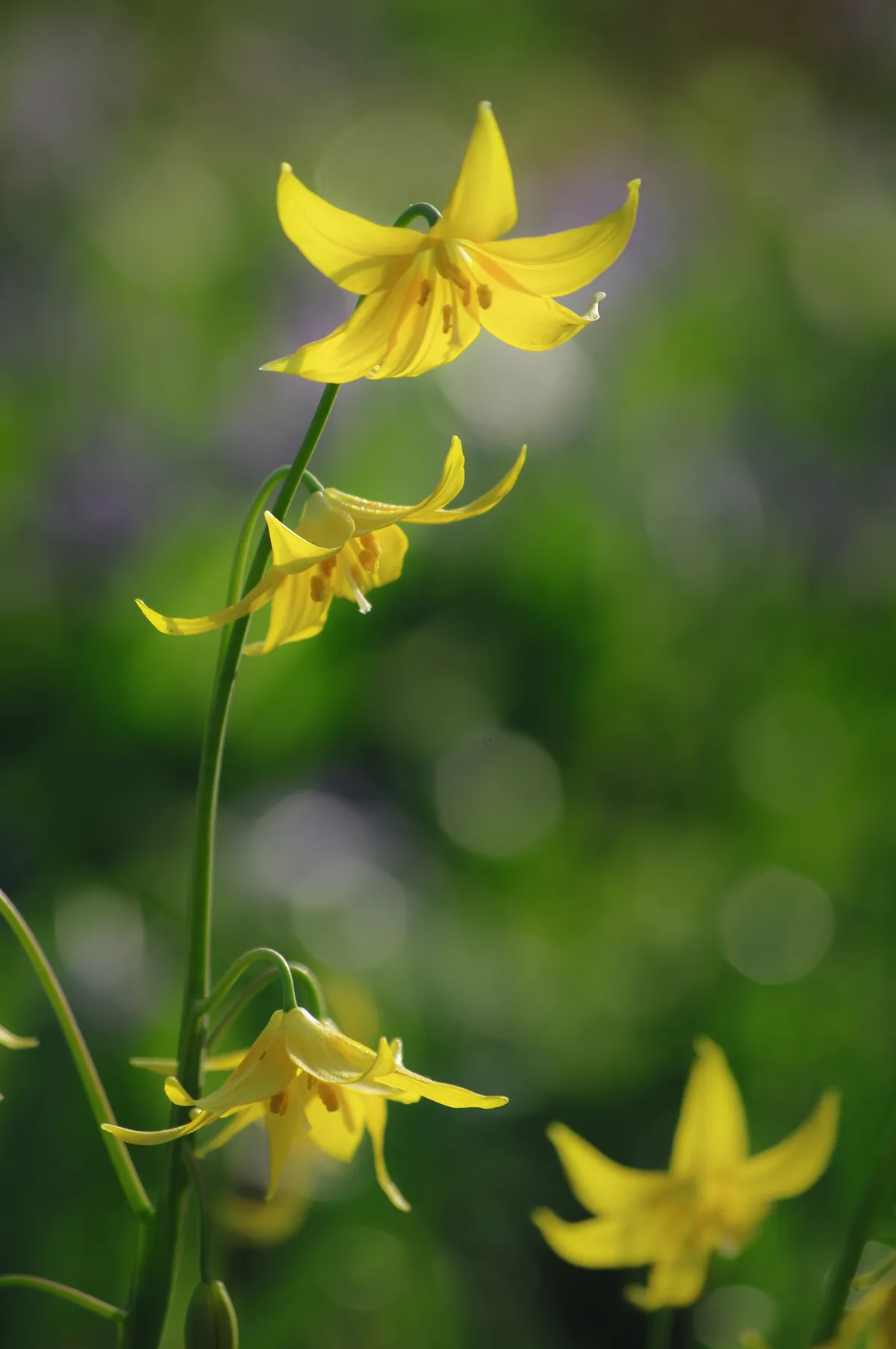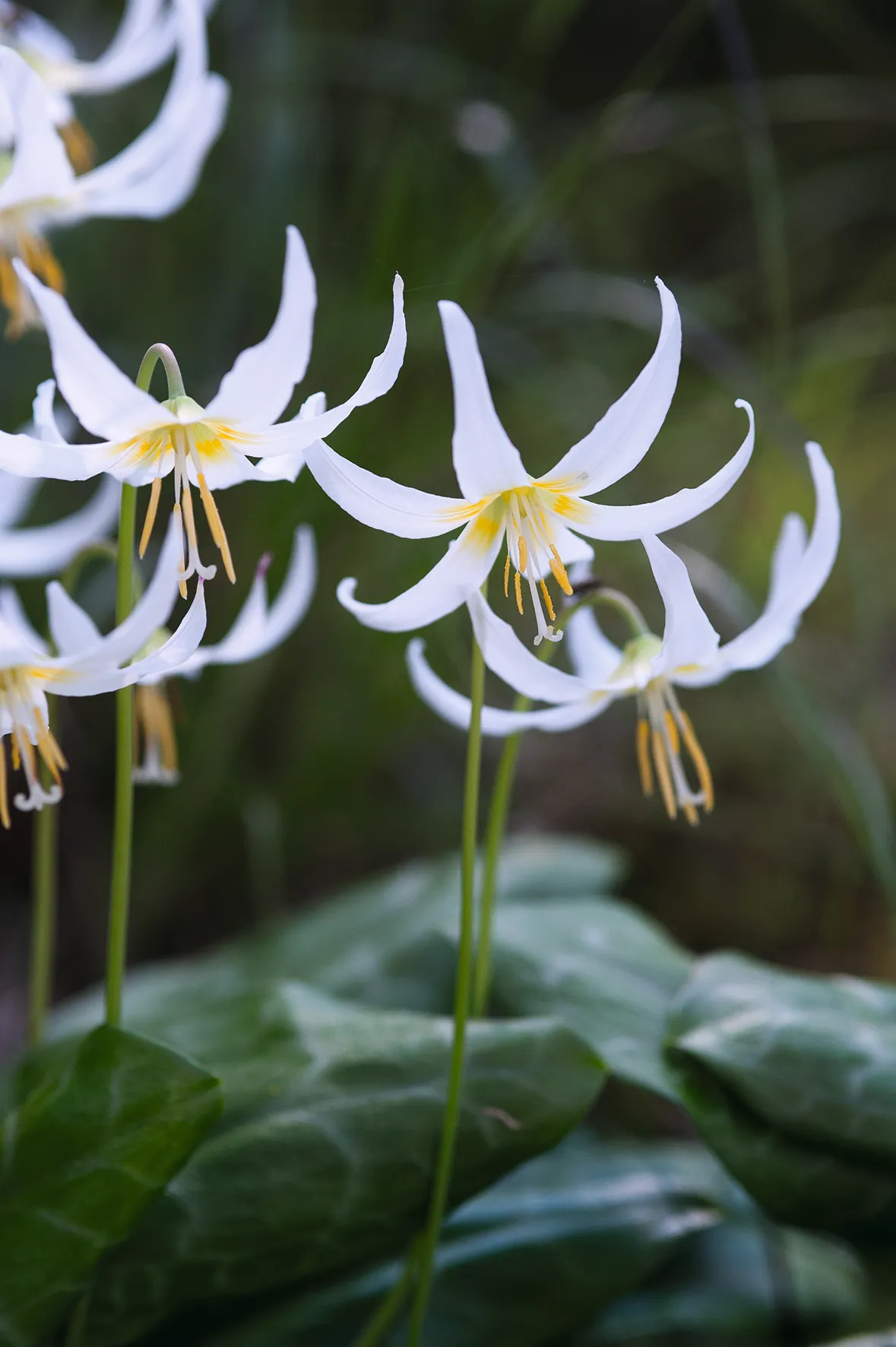The flowers of Erythronium are unlikely to be mistaken for anything else. Although erythroniums are closely related to tulips, there’s little obvious resemblance. Growing from small bulbs, the flowers are held on a thin, arching stem and hang downwards, with petals swept back at varying angles.
There are around 28 species of these bulbous plants, often with attractive foliage and nodding flowers of spreading or reflexed petals. Colours range from white, cream and yellow to pink and purple. They are also known as dog’s tooth violet, fawn lily and trout lily.

A few species are from Europe and Asia, but the majority come from North America, where there are two distinct groups in the east and west of the continent.
Jump to
- How to grow erythronium
- Where to plant erythronium
- How to plant erythronium
- Caring for erythronium
- How to grow erythronium from seed
- The best erythronium for your garden
How to grow erythronium
The bulbs should be planted at the end of summer. Plant as soon as you get them as they don’t like to be dried out too much.
Where to plant erythronium
The best place to plant erythroniums is in a woodland garden or shady border under shrubs, plant the bulbs in light but humus-rich soil that does not dry out completely in summer.
Erythroniums are hardy throughout almost all of the UK. Most have an RHS hardiness rating of H5. They are suitable for gardens in USDA hardiness zones 3a to 9b.
Most erythroniums are straightforward to grow if planted in dappled shade and light but humus-rich soil. Some of the smaller species, such as E. dens-canis, which only grows to about 10cm, can be swamped by surrounding plants so be careful where you place the bulbs. The one thing they don’t like is to be in dry, dusty soil in summer.
How to plant erythronium
Erythronium bulbs are long and thin and should be planted vertically, with the most pointed end up.
Dig a hole deep enough that you can cover the top of the bulb with around 10cm of soil, or use a deep pot.
Large clumps of strong-growing plants, such as Erythronium tuolumnense, Erythronium ‘Pagoda’ or Erythronium californicum ‘White Beauty’, can be lifted and carefully divided by pulling them apart. Replant them straight away. They will benefit from a mulch of well-rotted compost in the autumn, which helps keep moisture in the soil and provides valuable nutrients.
Caring for erythronium
Smaller species such as Erythronium dens-canis benefit from some cool shade, even when dormant, so a woodland garden or border of deciduous shrubs is ideal. Here they can make the most of the light while the trees are bare and take advantage of the shade in summer to prevent them drying out. If grown in pots, move them to a cool, shady spot once they have died down.
Less vigorous spreaders, such as Erythronium hendersonii, Erythronium citrinum and Erythronium oregonum, are best left to their own devices. They will slowly spread, often by seed, and find their own place in a border. You can also collect the seed and sow them yourself. Cut the seed pods off in early summer and keep them dry in a paper bag until early autumn.
How to grow erythronium from seed
Growing erythroniums from seed is a slow process and it might take five years until they flower but it can be the only way to get some of the more unusual species. Sow in pots and only lightly cover the seeds with a thin layer of soil or fine grit. Place the pots in a sheltered spot outside until they germinate.
The best erythronium for your garden
Erythronium revolutum

With its strongly mottled foliage and rich rose-pink flowers, this is a striking species. Naturally found from British Columbia to California, it makes a wonderful garden plant.
30cm. RHS H5, USDA 3a-8b.
Erythronium 'Sundisc'

A beautiful, large-flowered form, probably the result of hybridisation between E. californicum ‘White Beauty’ and E. tuolumnense. Similar to ‘Pagoda’ but with well-marked, bronzy mottled leaves.
35cm. AGM. RHS H4.
Buy Erythronium 'Sundisc' from Broadleigh Gardens
Erythronium californicum 'White Beauty'
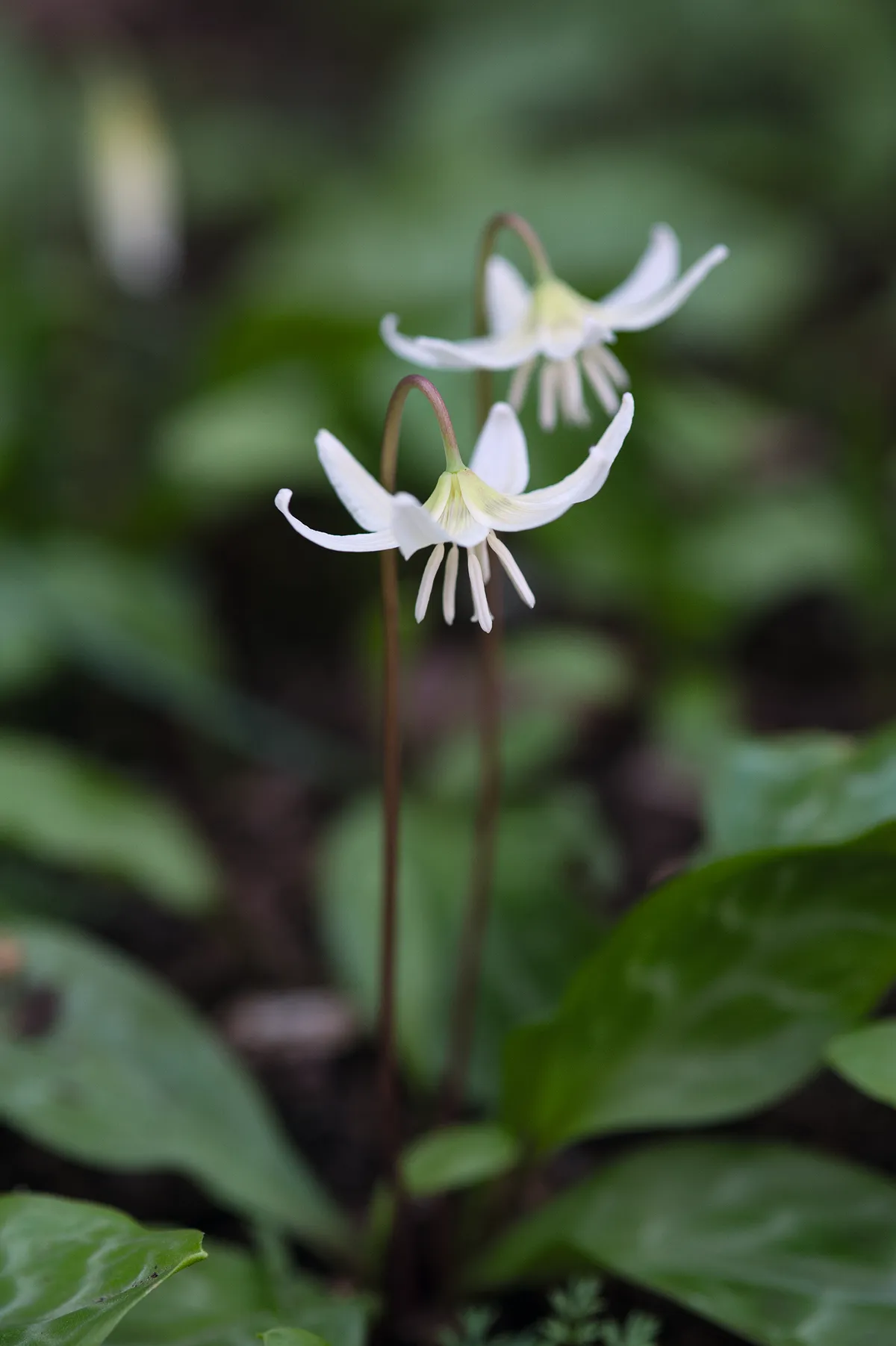
Increasing well by offsets to gradually create large clumps, it has been crossed with other species to produce several popular hybrids for the garden.
30cm. AGM. RHS H5.
Erythronium americanum

Called the trout lily because of the heavy mottling on its leaves, this short, stoloniferous species comes from eastern North America. The yellow flowers have petals backed with bronzy purple.
15cm.
Buy Erythronium americanum from Ballyrobert Gardens
Erythronium 'Rosalind'

Raised by plantsmanKeith Wiley from seed of Erythronium revolutum Johnsonii Group that had crossed with ‘White Beauty’. Flowers are white in the centre but pink towards the tips of the petals.
25cm.
Find Erythronium 'Rosalind' through the RHS
Erythronium 'Janice'
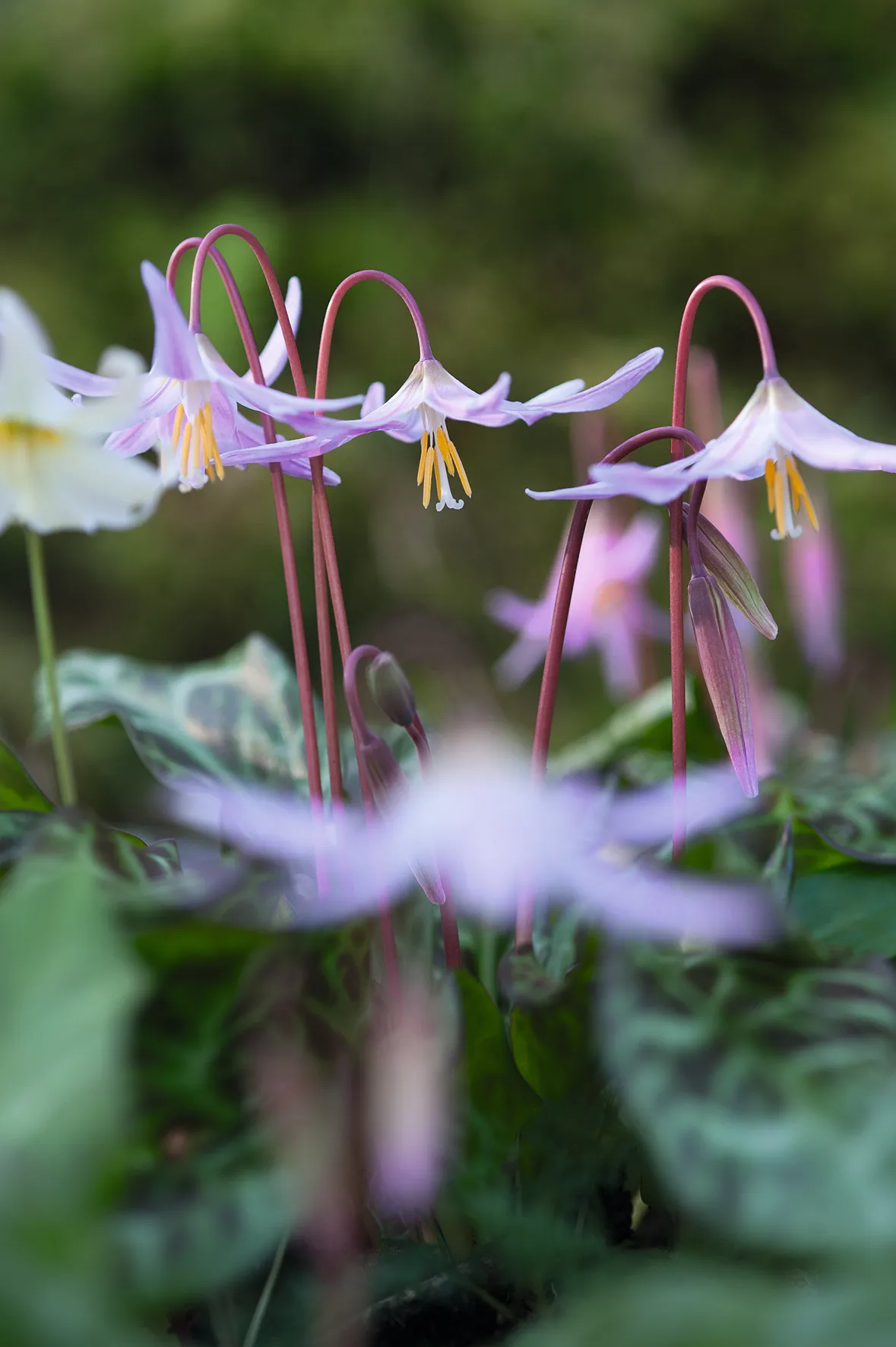
A strong-growing, pink- flowered hybrid, very close to E. revolutum. The flowers are white at the centre with a ring of yellow and the leaves are attractively mottled with white veins.
30cm. AGM. RHS H5.
Find Erythronium 'Janice' through the RHS
Erythronium hendersonii
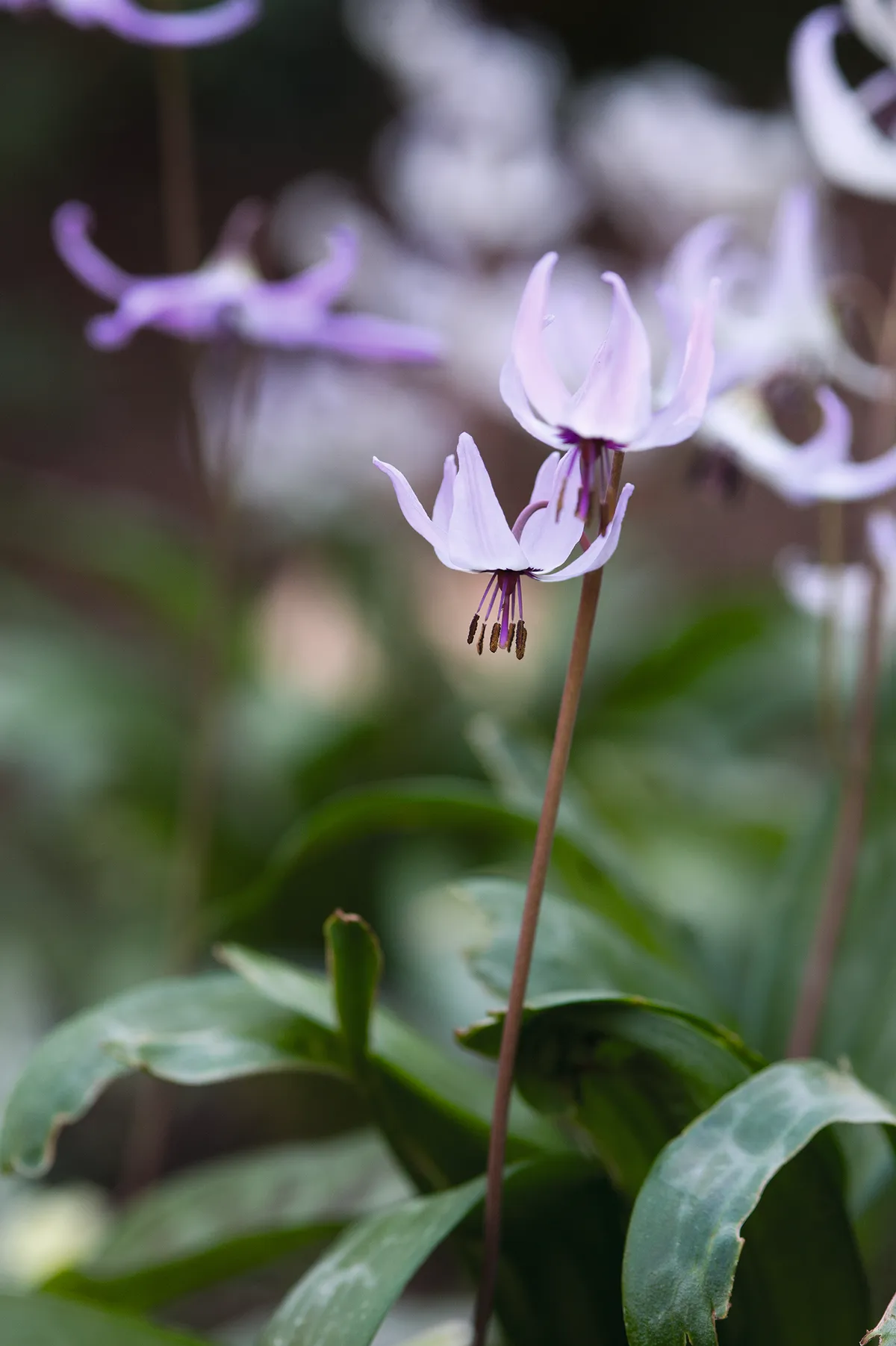
A lovely species from southern Oregon and northern California. The flowers have reflexed petals and are pale lavender-pink with a dark-purple centre and purple anthers.
30cm. AGM. RHS H5.
Find Erythronium hendersonii through the RHS
Erythronium citrinum
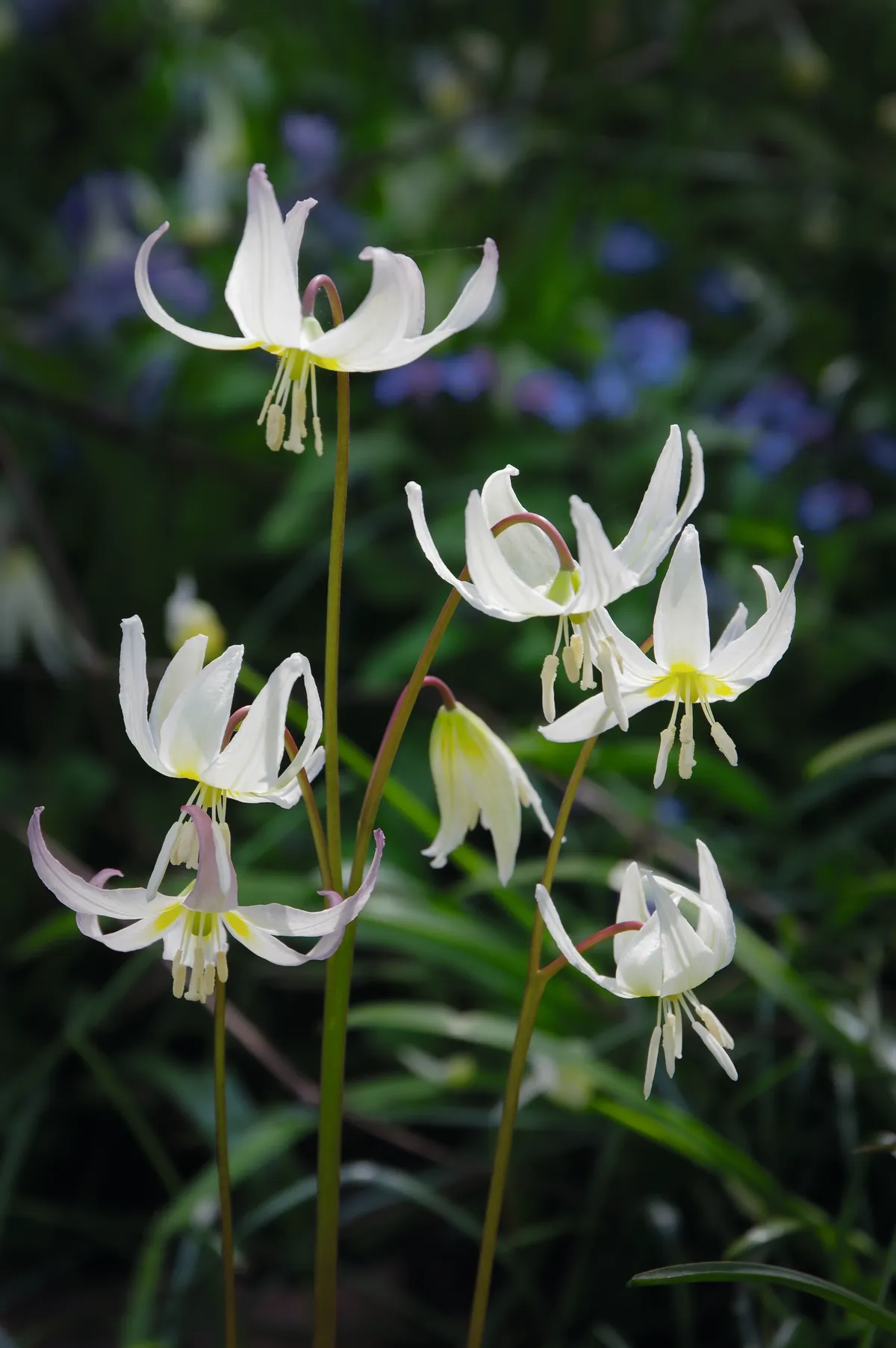
A delicate-looking species from southern Oregon and northern California that has mottled leaves and a white flower with a greenish yellow centre. The petals spread wide when fully open.
25cm.
Find Erythronium citrinum through the RHS
Richard Wilford is a horticulturist based at the Royal Botanic Gardens, Kew. He has provided recommendations for erythroniums for this feature.
